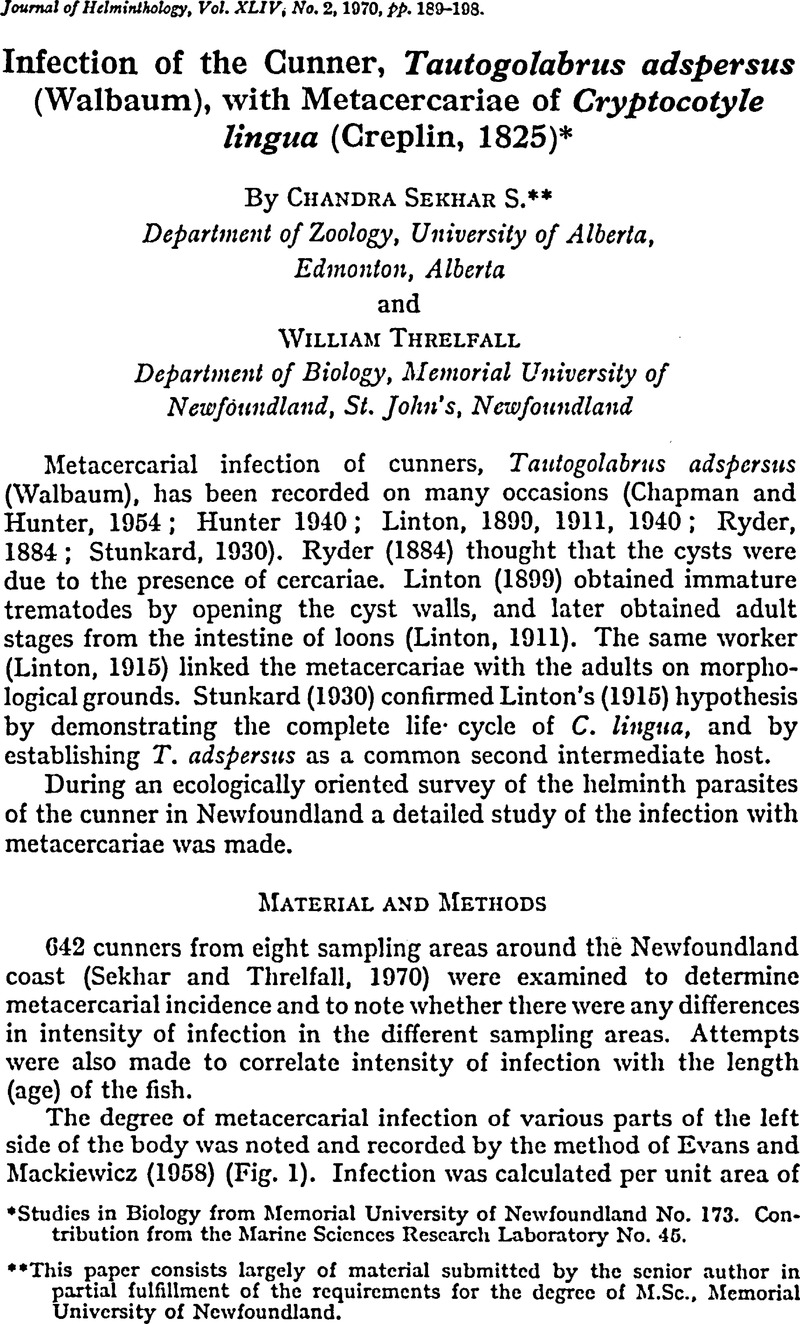Crossref Citations
This article has been cited by the following publications. This list is generated based on data provided by Crossref.
Sekhar S., Chandra
and
Threlfall, William
1970.
Helminth Parasites of the Gunner,Tautogolabrus adspersus(Walbaum) in Newfoundland.
Journal of Helminthology,
Vol. 44,
Issue. 2,
p.
169.
Rea, J. G.
and
Irwin, S. W. B.
1991.
Behavioural responses of the cercariae of Cryptocotyle lingua (Digenea: Heterophyidae) to computer-controlled shadow sequences.
Parasitology,
Vol. 103,
Issue. 3,
p.
471.
Rea, J. G.
and
Irwin, S. W. B.
1992.
The effects of computer-controlled shadow stimuli on the success of cercarial transmission by Cryptocotyle lingua (Digenea: Heterophyidae).
Parasitology,
Vol. 105,
Issue. 2,
p.
243.
2007.
Parasiten des Fischfilets.
p.
63.
Umasuthan, Navaneethaiyer
Valderrama, Katherinne
Vasquez, Ignacio
Segovia, Cristopher
Hossain, Ahmed
Cao, Trung
Gnanagobal, Hajarooba
Monk, Jennifer
Boyce, Danny
and
Santander, Javier
2021.
A Novel Marine Pathogen Isolated from Wild Cunners (Tautogolabrus adspersus): Comparative Genomics and Transcriptome Profiling of Pseudomonas sp. Strain J380.
Microorganisms,
Vol. 9,
Issue. 4,
p.
812.
Duflot, Maureen
Gay, Mélanie
Midelet, Graziella
Kania, Per Walter
and
Buchmann, Kurt
2021.
Morphological and molecular identification of Cryptocotyle lingua metacercariae isolated from Atlantic cod (Gadus morhua) from Danish seas and whiting (Merlangius merlangus) from the English Channel.
Parasitology Research,
Vol. 120,
Issue. 10,
p.
3417.



